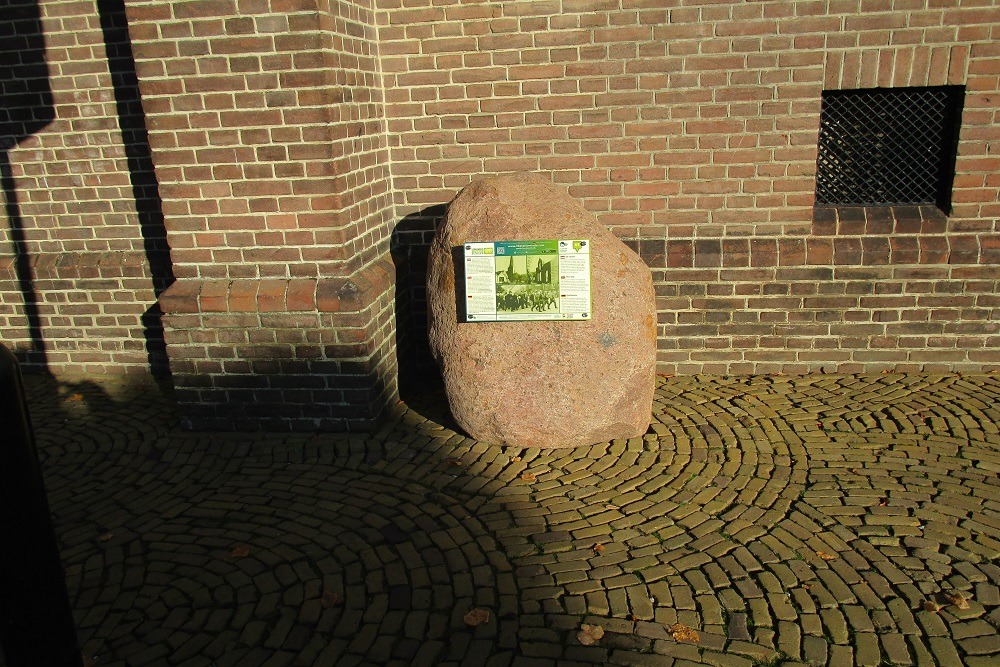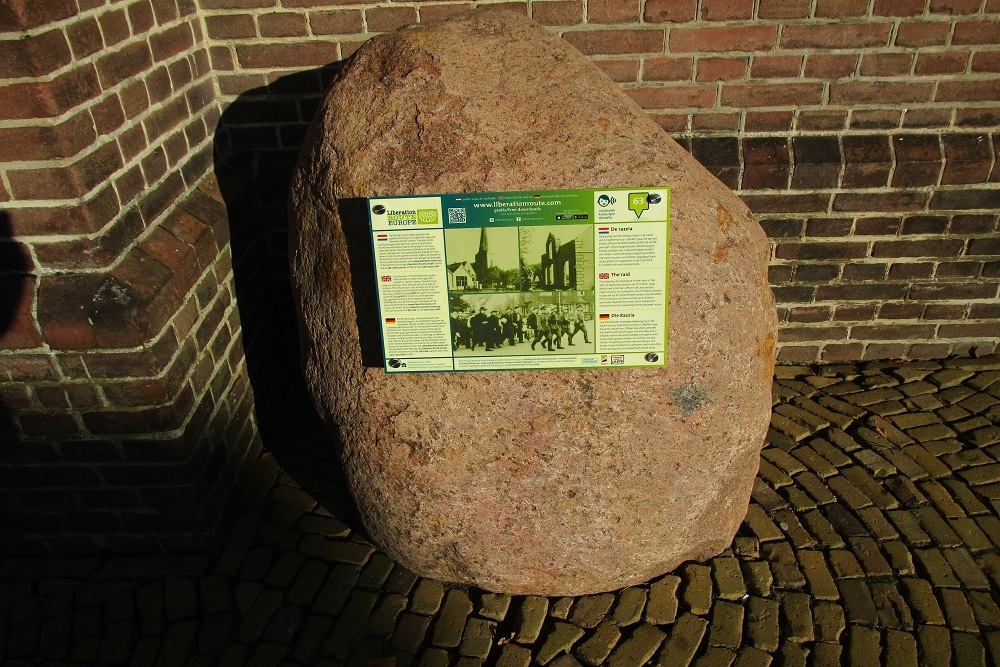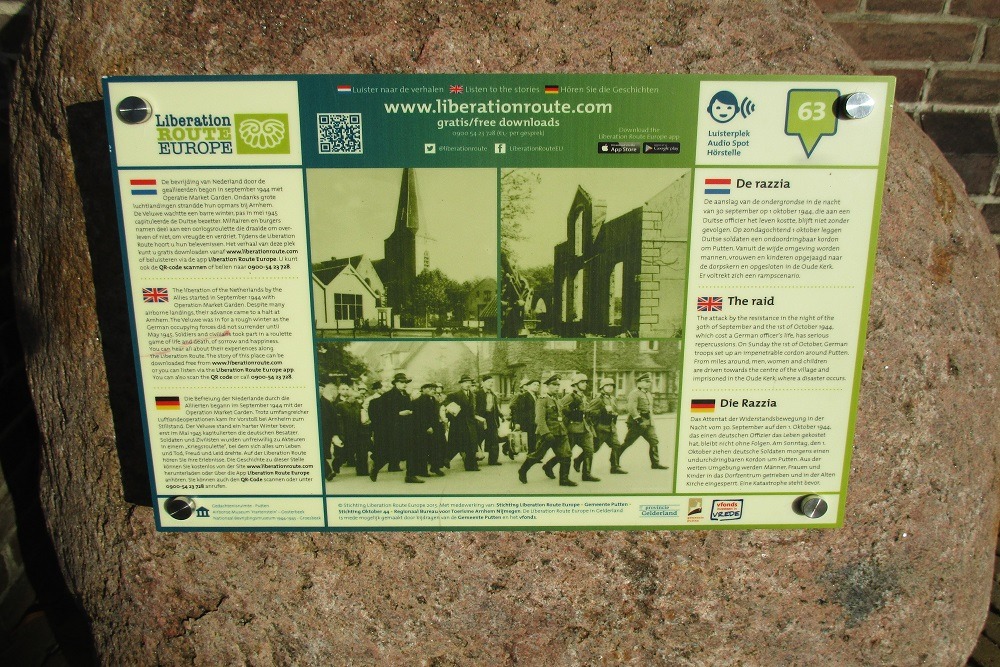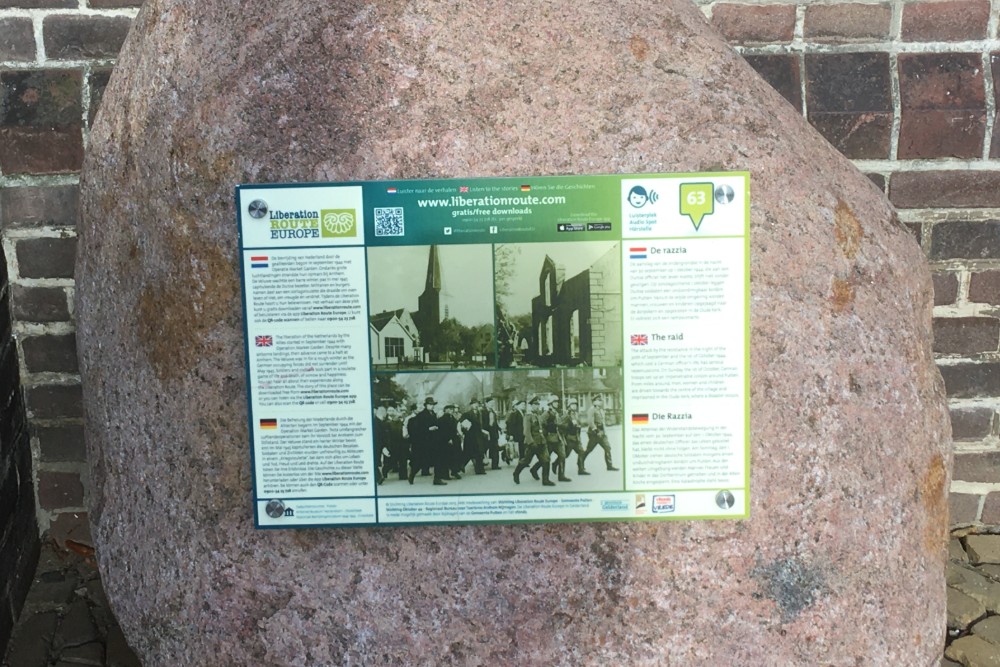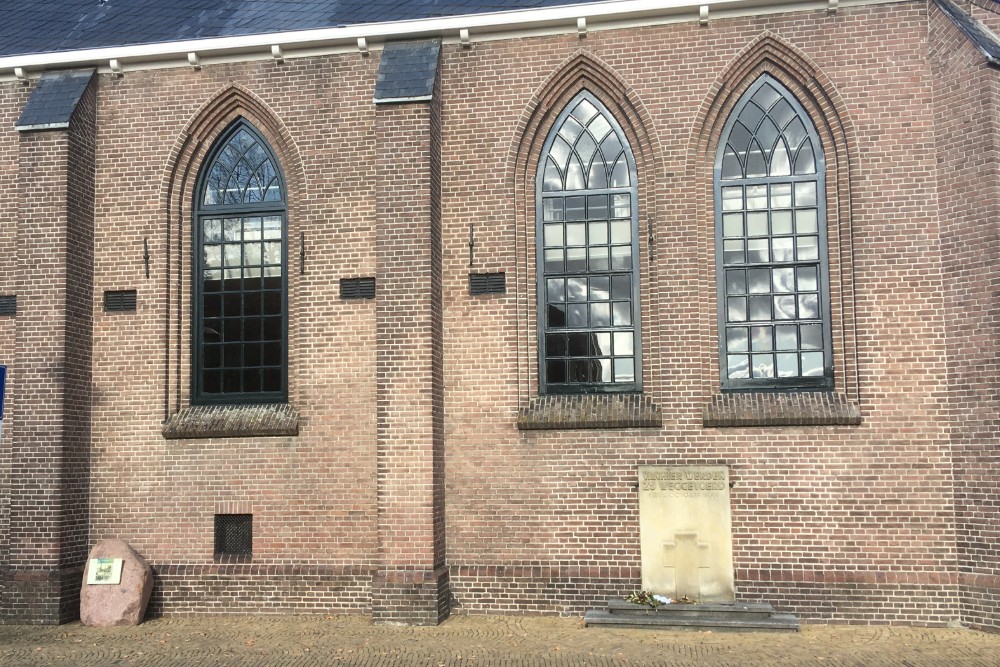Liberation Route Marker 063: The raid
The raid
A resistance attack on the night of the 30th of September 1944, which took to a German soldier's life, was not without consequences. On Sunday the 1st of October, a regiment of Germans set up an impenetrable cordon around Putten. From miles around, men, women and children are driven into the village and imprisoned in the Oude Kerk. What follows is a disaster.
On the night of the 30th of September 1944, the resistance launches an attack in which a German officer is killed. The German high command immediately takes reprisals. The village is cordoned off and Friedrich Christiansen, the highest Wehrmacht general in Netherlands, orders a round-up. Staff Officer Von Wühlisch carries out the order and about a thousand soldiers of the Hermann Göring regiment brutally drive the civilians, under police supervision, to the village centre. That day, seven people are shot. The men are locked up in the primary school on the market square. The women and children sit in the over-crowded Old Church. On Sunday morning, the following pronouncement is made. Putten will be burned down, the male inhabitants will be transported to Amersfoort and Putten must be fully evacuated within two hours. 659 men leave for Camp Amersfoort. On the 11th of October, 601 of them are transported to the Neuengamme concentration camp. Thirteen men jump off the train. The deportees face severe hardships; malnutrition, disease and many die of exhaustion from hard work. After the liberation, only 48 return. And of them, five die. There are 552 deaths to mourn as a result of the round-up and deportation.
Audiospot - The raid
Liberation Route Europe is a certified Cultural Route of the Council of Europe. With hundreds of sites and stories in nine European countries, the route links the main regions along the advance of the Allied Forces in 1943-1945.
The entire route consists of themed routes that can be travelled by by hiking, walking, cycling and car. These routes pass numerous historical and interesting sites and tell stories from a multitude of perspectives that were important in the final phase of World War II.
Many routes feature listening spots, offering the opportunity to listen to a historical story at a location. In addition, many ‘Vectors of Memory’ have been placed, indicating that the passer-by is on one of the Liberation Routes.
The routes can be found on the Liberation Route Europe website or in the app through which many stories can also be listened to.
Do you have more information about this location? Inform us!
Source
- Text: TracesOfWar & Liberation Route Europe
- Photos: Dick de Bruijne (1, 2, 3), Willem Visser (4, 5)
Nearby
Museum
- Commemoration Room for the Putten Raid - Putten
- Remembrance Center Northwest Veluwe '40-'45 - Harderwijk
Point of interest
- Bomb-crater Volenbekerweg - Putten
- Bomb-crater Oud Groevenbeek - Ermelo
- Positions Riebroekseweg - Ermelo
Monument
- Memorial Old Church Putten - Putten
- War Memorial General Cemetery Putten - Putten
- Liberation Route Marker 064: A village of widows - Putten
Cemetery
- Dutch War Grave Roman Catholic Cemetery Putten - Putten
- Commonwealth War Graves General Cemetery Putten - Putten
- Dutch War Graves General Cemetery Putten - Putten
Remembrance Stone
- Stumbling Stones Grieteweg 10 - Putten
- Stumbling Stones Harderwijkerstraat 91 - Putten
- Stumbling Stones Stationsstraat 82 - Putten
